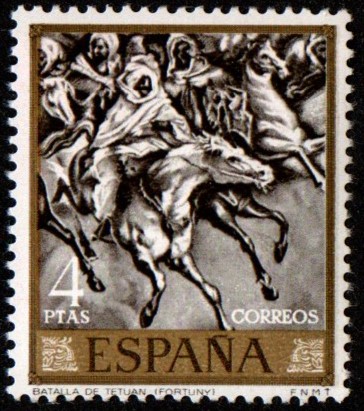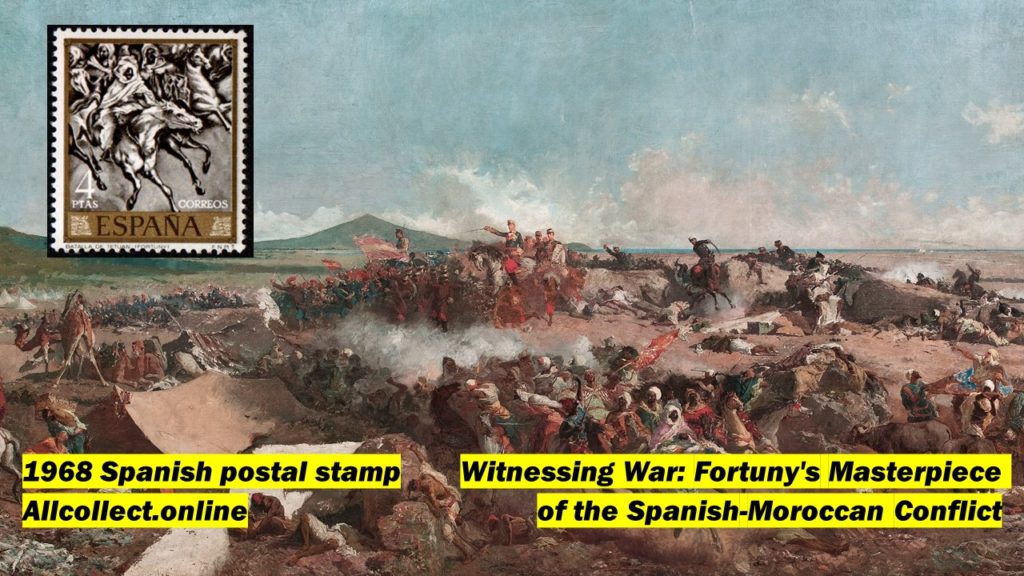Mariano Fortuny y Marsal (1838-1874) was a renowned Spanish painter known for his detailed and vivid historical scenes, as well as his Orientalist works. Among his most famous paintings is the “Battle of Tetuan.”

The “Battle of Tetuan”: An Overview

The “Battle of Tetuan” is one of Fortuny’s most significant works and showcases his incredible attention to detail and masterful handling of light and color. Painted between 1862 and 1864, this large canvas (approximately 3 x 5 meters) was inspired by the Spanish-Moroccan War, particularly the 1860 Battle of Tetuan.
Fortuny was present during parts of the Spanish-Moroccan War as he traveled to Morocco in 1860. Being a firsthand witness to the events, he was inspired by the scenes he observed. Direct exposure to such a significant military campaign provided him with the visual and emotional material he needed to create a monumental work.
Historical Context: The Battle of Tetuan took place during the Spanish-Moroccan War in which Spain sought to expand its influence in Northern Africa. The Spanish forces, under the leadership of General Leopoldo O’Donnell, achieved a decisive victory against Moroccan troops at Tetuan.
Artistic Representation: Fortuny’s painting is not just a mere representation of the battle but is a vibrant portrayal of the chaos, heroism, and brutality of war. The canvas is bustling with activity – from charging cavalry and clashing infantry to the wounded and fallen soldiers.
Technique and Style: Fortuny’s meticulous attention to detail is evident in the individual figures, the weaponry, and the attire. The way he captures the play of light, especially on the shimmering armor of soldiers and the white robes of the Moroccan fighters, is particularly noteworthy. The rich and varied color palette, combined with his skillful brushwork, brings the scene to life, making it both dynamic and captivating.
Reception and Legacy: When the “Battle of Tetuan” was first exhibited, it received widespread acclaim and helped cement Fortuny’s reputation as one of the leading painters of his generation. Today, it remains one of his most recognized works and is a testament to his ability to capture historical events with both accuracy and artistry.
Orientalism and Fortuny: Like many European artists of his time, Fortuny was fascinated by the cultures and landscapes of North Africa and the Middle East. This fascination is evident in his numerous Orientalist works. The “Battle of Tetuan,” while primarily a historical piece, also showcases this interest, offering viewers a glimpse into the exotic and unfamiliar world of 19th-century Morocco.
Mariano Fortuny’s “Battle of Tetuan” is more than just a historical painting. It’s a masterful blend of detailed realism and artistic interpretation, capturing a moment in time while also showcasing the broader themes of heroism, conflict, and cultural encounter. As with many of Fortuny’s works, the painting is a testament to his incredible skill and his enduring legacy in the world of art.

